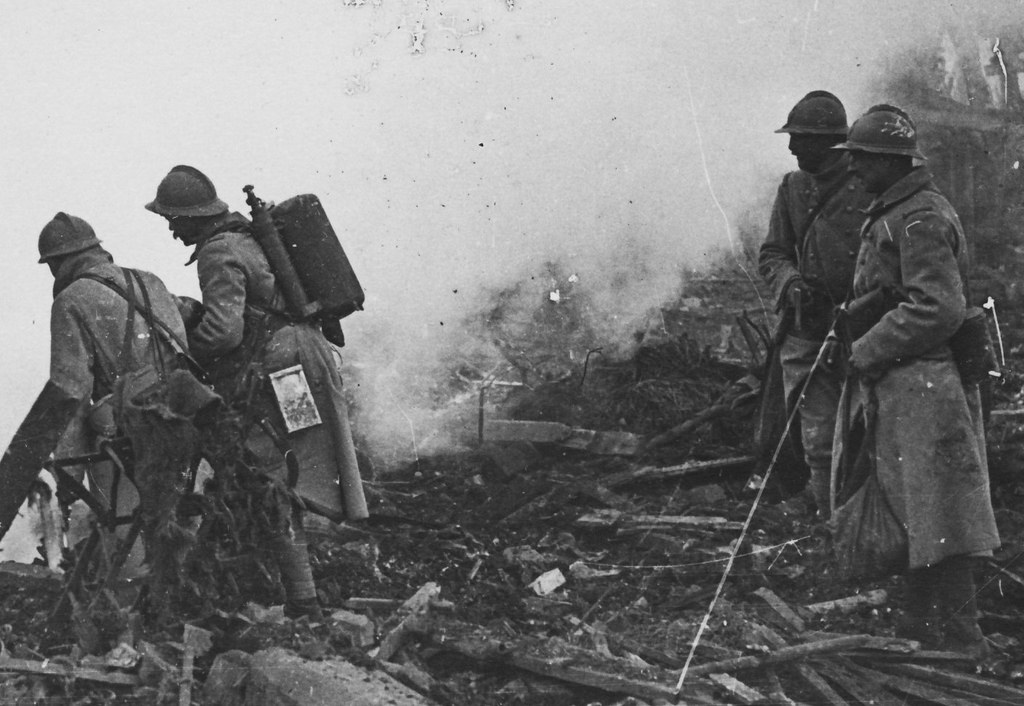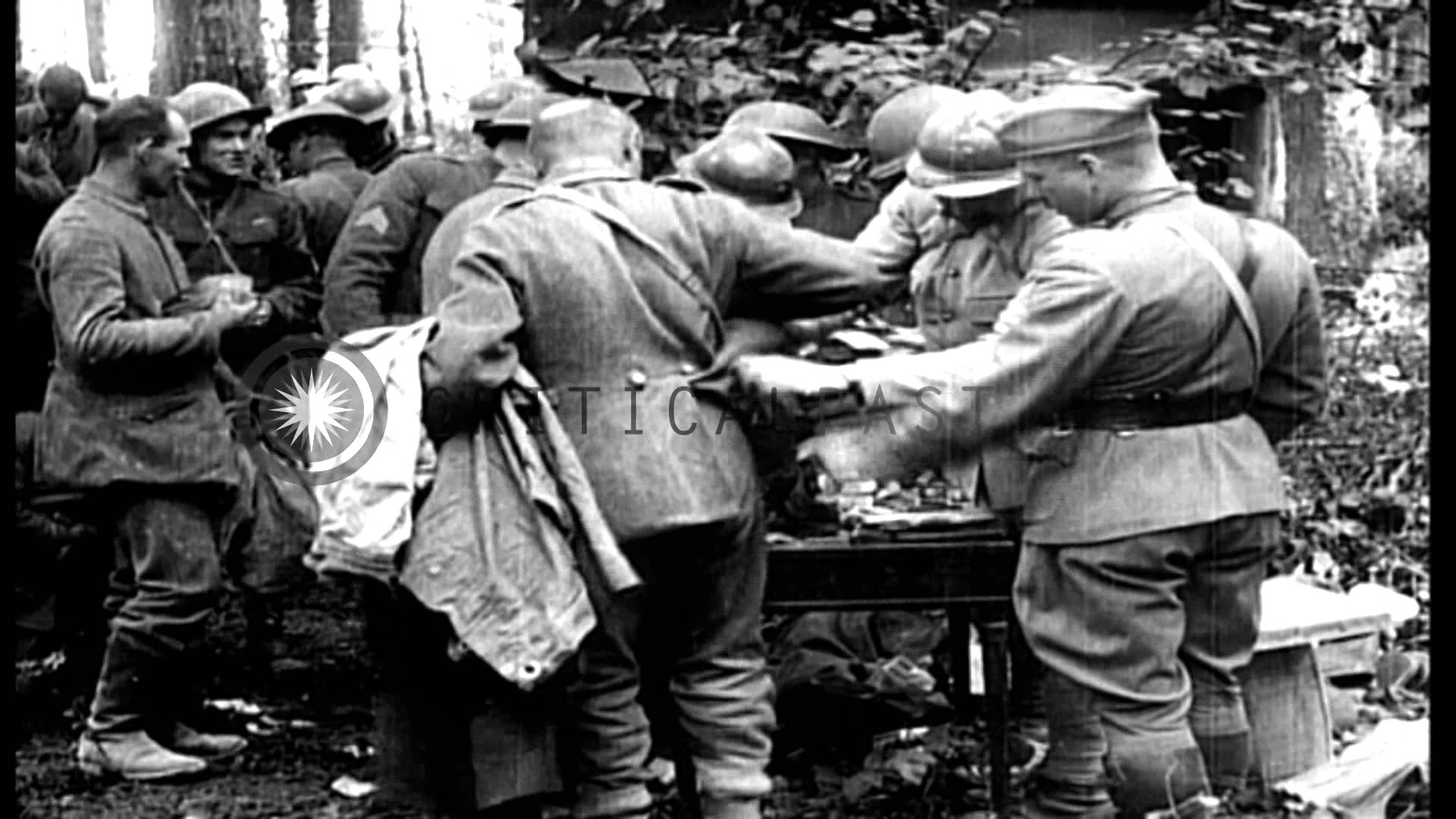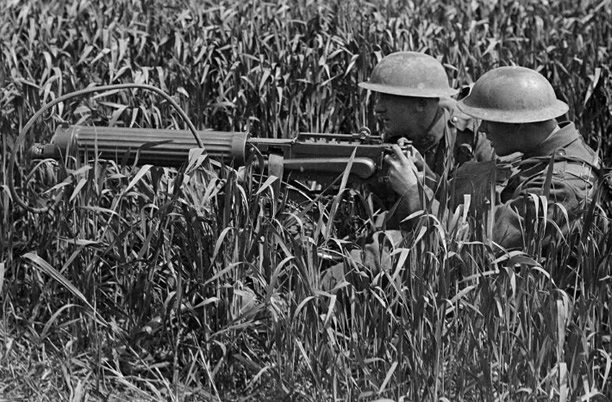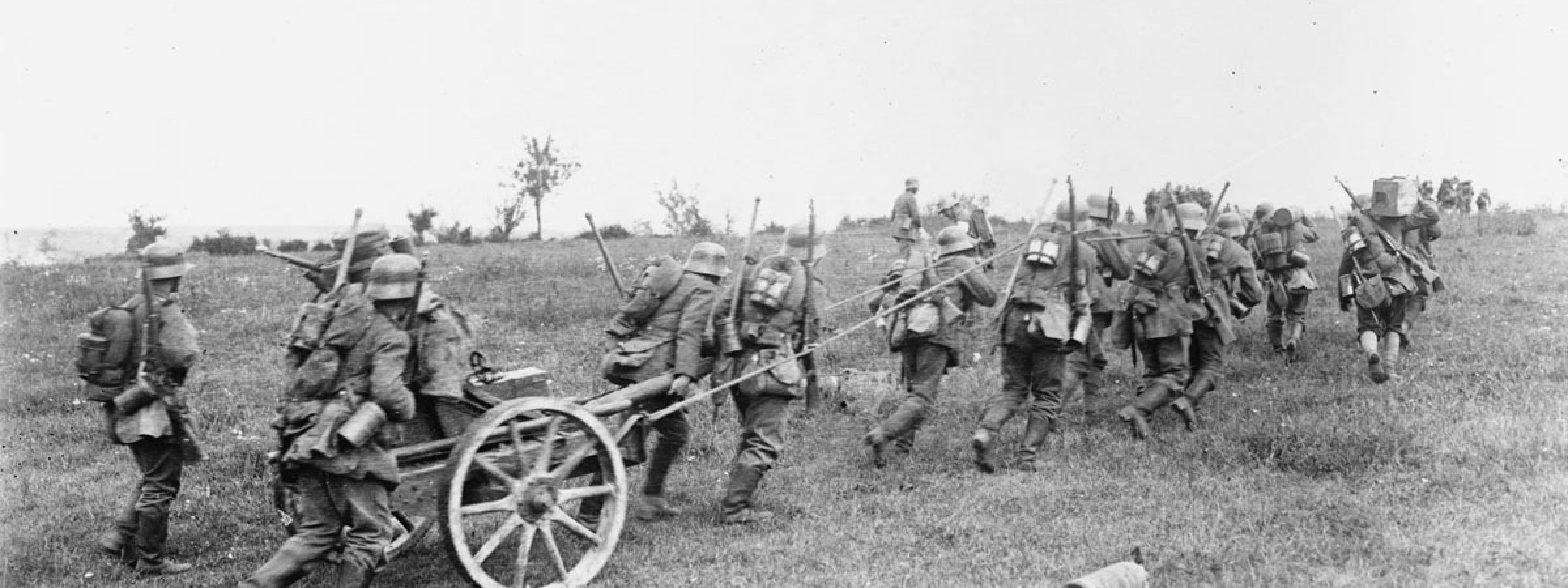Pershing Tells Shocked Allies;
Lesson for Germans: Americans Not a Rabble of Amateurs.
French Government Fleeing Paris.
Special to the Great War Project.
(29 May) On the Western Front, at the village of Cantigny, the Americans take back lost ground.
Despite significant losses and exhaustion, “the Americans held Cantigny,” reports historian Martin Gilbert. It gives Pershing a further argument for an independent United States command.
And it provides “the first cold foreboding to the Germans that this was not, as they hoped, a rabble of amateurs.”

French flamethrowers at battle for Cantigny.
Nevertheless, according to historian Gilbert, “the onward German thrust continued.” These days a century ago were crucial to the outcome of the war.
On May 29th German troops enter Soissons. Gilbert reports that after three days of fighting there, more than 50,000 French soldiers had been taken prisoner, as well as 650 artillery pieces and 2,000 machine guns seized.
The Germans press harder, reaching the river Marne.
That night General Pershing meets with the supreme Allied commander, French Marshall Foch. Reports historian Gilbert, “They contemplated the terrible situation the Allies were in, what was probably their most serious situation of the war.”

Processing German POWs at Catigny.
At this moment the Germans are just forty miles from Paris. “Once again,” reports Gilbert, “the French government was preparing to leave Paris and move south. Tens of thousands of civilians were fleeing from the capital as they had done in 1914.”
So once again, the French make urgent appeals to Pershing to transfer their now considerable force to French control in the collapsing French sector.
Pershing resists Foch as always, loath to give up control of the American forces, which he sees growing larger, month-to-month, at the rate of some quarter million men each month.
It turns out these numbers are not true. Pershing “stuns the Allied leaders” when he tells them at a meeting at Versailles that the Americans have only one month’s supply of soldiers at that rate to send to France.
“This was far fewer,” writes historian Gilbert, “than the Allies had imagined possible, but it was the true figure.”
The great American contribution to Allied manpower would not be ready until the end of the year, possibly not even until 1919.

Allied machine gunners block German spring offensive.
The French Prime Minister Georges Clemenceau remarks acidly: “That is a great disappointment.” Clemenceau urges that new American troops be trained in France, not in the United States. “Men learned quicker in France,” he says.
Pershing stubbornly answers, “I would not surrender my prerogatives” in this matter.
One other positive for the Allies though, writes historian Adam Hochschild: The growing size of the American force.
“The threat of an American army gathers like a thunder cloud,” a German officer writes in his diary, “and every week brings that threat closer.
“The brief window of opportunity for a decisive German victory was starting to close.”
Indeed, as the Americans rush to block the Germans at the river Marne in northern France, they are helped by the Germans’ own exhaustion” reports historian Martin Gilbert, “at the end of a six-day struggle, and by the great distance created by the German advance.”

Exhausted Germans in spring offensive, 1918.
Writes one French officer: “We all had the impression that we were about to see a wonderful transfusion of blood. Life was coming in floods to reanimate the dying body of France.”
